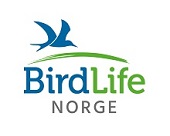
|
|
Hunn steinskvett med lyslogger, Sverige, mai 2012. Photo: Aïda López To underarter av steinskvett med forskjellige strategier for hannenes ankomst til hekkeplassen før hunnene. Den 29. september ble en ny artikkel om trekket til steinskvett publisert i det prestisjetunge vitenskapelige tidsskriftet, Behavioral Ecology, fra Oxford University. Artikkelen presenterer resultater fra en studie av trekket til to underarter av steinskvett. Vi gleder oss over å ha bidratt til studien med våre data fra 511 steinskvetter ringmerket på Lista fuglestasjon i løpet av 24 år. Av Aïda López Artikkelens tittel er Proximate causes of avian protandry differ between subspecies with contrasting migration challenges. Det ble funnet at hannene av den europeiske kontinentale steinskvetten (underart oenanthe) forlot overvintringsområdene tidligere enn hunnene for å ankomme hekkeområdene først. Hannene av den mer arktiske underarten av steinskvett (underart leucorhoa) hadde en annen strategi. Hos denne ankom hannene først til hekkeområdene ved å ha en raskere trekkhastighet enn hunnene. Studien viser igjen at ringmerking er et nyttig verktøy for studier av trekkfugler. Hvorfor kommer hannene tidligere enn hunnene til hekkeplassene om våren? Protandri, i denne sammenheng at hannene ankommer til hekkeområdene i forhold til hunner, er et vanlig fenomen som finnes hos mange trekkende organismer. Dette gjelder både innen insekter, fisker, pattedyr og fugler. Ankomstprotandri hos fugler kan være viktig for hannene i konkurransen om å sikre de beste hekkerevirene, og for å øke antall hunner per område, noe som resulterer i en høyere hekkesuksess. Hvordan klarer hannene å komme tidligere enn hunnene til hekkeområdene? Forskjellige mekanismer er blitt foreslått i løpet av de siste årene. I denne artikkelen studeres for første gang 3 forskjellige mulige årsaker til protandri innen en og samme langttrekkende spurvefuglart, steinskvett. De 3 mulige mekanismer som er vurdert i denne studien er: (1) hanner overvintrer nærmere hekkeområdene slik at trekkdistansen er kortere, (2) hanner forlater vinterområdene før hunnene, og (3) hannene trekker raskere enn hunnene. Steinskvetten er en av de mest utbredte arter rundt i slekta Oenanthe, hekkeområdet er enormt! Det ligger i Nord-Amerika, Europa og Asia. Alle steinskvettene fra hele dette området overvintrer i Afrika sør for Sahara. De trekker hver vår og høst en av de lengste kjente ruter blant alle spurvefugler. Det finnes flere underarter som hekker i ulike deler av verden Oenanthe oenanthe leucorhoa (Canada, Grønland, Færøyene og Island), Oenanthe oenanthe libanotica (Midtøsten: Øst-Europa og Vest-Asia), Oenanthe oenanthe seebohmi (Atlasfjellene) og Oenanthe oenanthe oenanthe (Europa, Asia og sentrale og nordlige Alaska). Artikkelen tar for seg de to underartene som trekker gjennom Europa, oenanthe og leucorhoa. Begge underarter overvintrer i samme habitat i Vest-Afrika og trekker gjennom Europa, men hekkeutbredelsen er som tidligere nevnt forskjellig. 16 studiesteder over hele Europa ble brukt for å sammenlikne ankomstdatoer. 10 steder var rasteområder under trekket ved forskjellige fuglestasjoner, inkludert Lista. De siste 6 var hekkeområder, noe som gjorde det mulig å sette lyslogger på fuglene (Ble bare gjort på underarten oenanthe). Resultatene av studien Angående punkt (1), data fra lysloggere viste at både hanner og hunner overvintret på samme breddegrader i Vest-Afrika. Dette innebærer at vi kan konkludere at hannene ikke overvintrer nærmere hekkeområdene og at dette (1) ikke kan forklare protandri hos underarten oenanthe. Det var ingen lysloggerdata for leucorhoa. Vurdereringen av punkt (2), så viste lysloggerdata for underarten oenanthe at hannene begynte vårtrekket tidligere enn hunnene. Hannene dro i gjennomsnitt 14 dager tidligere fra overvintringsområdene. Dette kan dermed være en forklaring (2) for protandri hos underarten oenanthe. Igjen, det var ingen sporloggsdata for leucorhoa. I forhold til punkt (3), ble vingens form (spiss eller rund) og fettopplagringshastighet (drivstoff) bestemt for begge underarter og begge kjønn ved Helgoland Fuglestasjon i Tyskland. Etter å ha analysert dataene kunne man konstatere at bare leucorhoa viste signifikante forskjeller mellom hann og hunn. Hannene hadde spissere vinger (kan oversettes til høyere flukthastighet) og og raskere energideponering (kan oversettes til kortere tid på rasteplass) enn hunner. Imidlertid var denne mekanismen (3) ikke avgjørende forskjellig hos oenanthe. Vi takker alle feltarbeidere og frivillige ved Lista fuglestasjon, forfatterne av denne artikkelen og spesielt Heiko Schmaljohann og Debora Arlt for for å la oss bidra til denne fascinerende artikkelen og gi mening til våre data og daglige arbeid. |

| Merketall |
|
Beklager, men vi er utenfor vår- og høstsesongene. Detaljert logg |
| Reportasje fra Lista FS i Aftenposten |

|
| Sesongavvik observasjoner | ||||||||||||||||||||||||||||||
|
|
Følg Følg Lista FS på facebook.com |
| Siste 5 på siden |
|
Ringmerkere til vår- og høstsesongen 2026 søkes Rapport fra våren 2025 Festivalgjester presenterer ny fuglebok Lista Fuglefestival 2025 Rapport fra høsten 2024 |
Lista Fuglestasjon
Fyrveien 6
NO-4563 Borhaug
post@listafuglestasjon.no Tlf: 949 86 793
 |  |


 Bare på norsk
Bare på norsk



